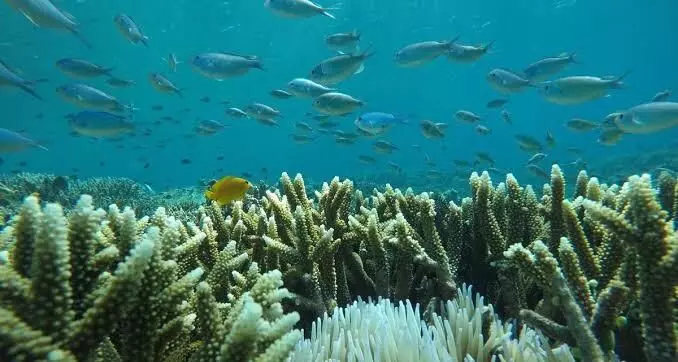
14% of global coral wealth lost to global warming in a decade: report
text_fieldsParis: The largest ever survey of coral health has inferred that fourteen per cent of the world's coral reefs were wiped out from 2009 to 2018, primarily by global warming. In addition to global warming, dynamite fishing and pollution played healthy roles in coral depletion, the survey found.
Corals in South Asia, the Pacific, the Arabian Peninsula and off the coast of Australia were the worst hit, according to the Global Coral Reef Monitoring Network, with a strength of 300 scientists, said in the report titled " Status of Coral Reefs of the World: 2020". Loss of coral varied from 5 per cent in East Asia to 95 per cent in the eastern tropical Pacific.
Co-author and CEO of the Australian Institute of Marine Science, Paul Hardisty, said in a statement that climate change is the biggest threat to the reefs.
Oceans absorb more than 90 per cent of the excess heat out of the greenhouse effect. Oceans shield the land from heat but generates massive long-lasting marine heatwaves, which many species of corals cannot tolerate. In 1998 a ''bleaching event'' out of warm waters wiped eight per cent of all corals worldwide.
Though the coral reefs cover only 0.2 per cent of the ocean floor, it is home to at least a quarter of all marine lives. Besides providing shelter for marine lives, it also checks shoreline erosion, protection from storms, jobs for people etc. The report stated that the value of goods and services from the corals is about 2.7 trillion dollars per year and 36 billion dollars out of it comes from tourism.
The UN's climate science advisory panel, the IPCC, warns that global warming of 1.5 degrees Celsius above preindustrial levels will result in 70 to 90 per cent depletion of global corals. But the report also offers reasons for cautious optimism. East and Southeast Asia's "Coral Triangle", which contain 30 per cent of the world's coral reefs, were hitless over the last decade, and some even showed recovery. The authors said that the resilience must be because of the species unique to the region, which offers strategies to boost coral growth elsewhere.
The report is the sixth on such a global survey and the first since 2008. It was done based on around two million data points from 12,000 sites within 73 countries through 40 years. Researchers contrasted areas covered by healthy coral with areas taken over by algae or coral in distress to measure the change over time. The report was done with support from the United Nations Environmental Program (UNEP) and the International Coral Reef Initiative, partnerships with governments and research organisations.























